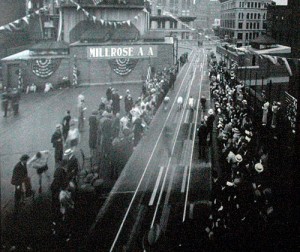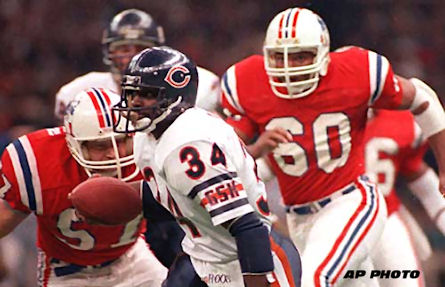Posted on
January 26, 2010 by
Marianne Bevis

Rafael Nadal's exit from the Australian Open was much earlier than he had hoped.
It seems barely possible that, in this very week just one year ago, the tennis world was predicting that Rafael Nadal could become only the third man in history to complete the tennis Grand Slam.
He’d just won his first Slam on the hard courts of Melbourne against one of the greatest hard-court players of all time, Roger Federer.
He’d beaten the king of grass, Federer again, in the previous Wimbledon final, in equally dramatic style.
With that Wimbledon triumph, Nadal had claimed the No. 1 ranking after more than three years at No. 2—behind the same man.
To cap it all, he’d won the Olympic gold medal.
Nadal had now got the better of Federer in the finals of three of the four Slams. With his win in Australia, he could probably win in the U.S. Open too. The French would be a shoo-in; it always was. And Wimbledon—well, he’d mastered the grass as well.
Little wonder, then, that when he won the Australian Open title, Nadal seemed set to dominate not just Federer but the whole of men’s tennis.
For a glorious window of four months in the spring of 2009, that looked like a sound prognosis. At worst, Nadal could beat Federer to a career Grand Slam, and at best, he could join the true elite of tennis with a calendar Grand Slam.
With his win on the hard courts of Indian Wells, Nadal moved more than 4,000 points clear of the field.
With the transition to clay, he won successive tournaments in Monte Carlo, Barcelona, and Rome.
In the process, he notched up wins against Andy Murray on hard and Novak Djokovic on clay.
As this correspondent wrote last March, before the Tour had even moved to clay, who could break Nadal’s vise-like grip on men’s tennis?
But beware the “Ides of March,” for there were hints that Nadal’s punishing style of play and all-out attack on the schedules were starting to weigh heavy on his knees.
Nadal had pulled out of Dubai in February to give those knees some attention, and the rumor mill ground away at the kernels of this ongoing story. But while his knees were permanently swathed in support bandages, Nadal’s movement around the courts never seemed compromised, and he constantly silenced the doubters. Read the rest of this entry →
 Cleveland Indian’s pitcher Jason Grilli has a career record of 18-18 with a 4.74 ERA. Good enough by all standards to make him one of the top middle relievers in the game, but the Hall of Fame is not yet calling. According to the record book that really counts, however, Grilli is a winner of the Cy Young Award, MVP and slated for induction into Life’s Hall of Fame.
Cleveland Indian’s pitcher Jason Grilli has a career record of 18-18 with a 4.74 ERA. Good enough by all standards to make him one of the top middle relievers in the game, but the Hall of Fame is not yet calling. According to the record book that really counts, however, Grilli is a winner of the Cy Young Award, MVP and slated for induction into Life’s Hall of Fame.


 The definition of a true hero is not a guy who leaps tall buildings in a single bound but, more realistically, a person who heaps the world’s problems upon his or her broad shoulders without regard for their own personal health or well-being. A person who sees a situation and devises a solution, rather than to turn their backs and complain.
The definition of a true hero is not a guy who leaps tall buildings in a single bound but, more realistically, a person who heaps the world’s problems upon his or her broad shoulders without regard for their own personal health or well-being. A person who sees a situation and devises a solution, rather than to turn their backs and complain.



